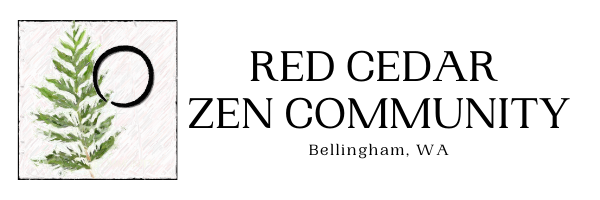Podcast: Play in new window
Hearing Buddha Speak – notes
Rohatsu talk, Dec. 6, 2014
Following the ancestors, following the body
Through the forms, connecting to all the practice that has gone on before
Suzuki
Because we want to find out the actual value of the teaching, we practice Zen and train ourselves to have the actual living meaning of the scriptures. But this practice must be quite serious. If we are not serious enough, the practice will not work and the teaching will not satisfy you. If you have a serious friend or teacher, you will believe in Buddhism. Without an actual living example it is very difficult to believe or practice. So to believe in your master and be sincere—that is enlightenment. So we say, “Oneness of enlightenment and sincere practice.”
Placing oneself in a vertical relationship (with something larger than yourself)
- Opens us to the dharma, to life, from above and below
- Allows us to receive, barriers are set aside
- This is humility This is freedom
- This is dropping the fight—the bumper car relationships of the horizontal
- This opening to a fluidity of roles
Retaining our sovereignty in a vertical relationship (with the world?)
- This is not placing yourself in the teacher’s hands
- This is not giving yourself to the teacher, but giving yourself to the universe using the teacher as a model
- This is following the body
- This is taking on the shape of the mind
- The teacher’s job is to guide you toward relying on your own connection to the dharma
This is scary, requires lots of letting go. Through zazen, we must develop acceptance of not-knowing
- This is wholeheartedly giving away your preferences and taking on a different way
- This is allowing ourselves to be transformed in a way that we can’t imagine. When we get there we say, “Of course.”
We verify for ourselves
Suzuki
. . . So Dōgen said, “If you want to listen to a Zen master for absolute truth, you must not think about his rank, his accomplishments, deeds, or shortcomings. Accept him just as he is because he is a bodhisattva.” That is the right attitude toward life—just accept it.
Allowing the teacher to be a bodhisattva. To learn what it is to be a bodhisattva, you must meet a bodhisattva.
Teacher must continually hand back the gold that has been entrusted
Teacher just needs to be mostly trustworthy
Following the body (of the ancestors) through the forms of practice
Following the body that leads to the true self
Suzuki
. . . So Dōgen said, “Everyone is your master, don’t pay any attention to whether they are a layman or priest, a woman or man, young or old. Everyone is your teacher and your friend, but as long as you discriminate this from that, you will not meet a Zen master.”
. . . If your attitude is right, everything you hear will be Buddha speaking. Then the master is not teacher or student, but Buddha himself.
Opening to another human being, vertically, is s step toward allowing grasses and trees, fences and walls, to express the dharma.
Allowing pillars and lanterns to expound the dharma, Dogen, EK #10
Taking a step forward or backward at the top of a hundred jo pole, with a single mind, turn your face and transform your self. This mountain monk [Dogen] will allow the pillars and lanterns to expound this principle for everyone. Have they finished expounding it yet or not? They expounded it last night, and also the night before. Tomorrow they will expound it, and also the day after tomorrow. If they have finished expounding it, has everyone heard it or not?
All things expounding the dharma
Intimate exchange with each thing in this moment
Dogen, EK #68, Jumping and Stumbling in a Fragrant World
When we exhaust our strength to express it, the pillars help us from the sidelines with half a word. Training the mind and verifying enlightenment, a wooden ladle energetically adds another mouthful [of sustenance for practice]. For a person who can hear and who can practice, emotions are not yet born and forms have not yet appeared. Voices babbling on, every bit is naked. Without awakening, advancing each step we stumble over our feet, making seven mistakes and eight mistakes. Without resting, taking a step backward we stumble over our exposed legs; arriving at two and arriving at three. Jumping up and kicking over Mount Sumeru, pick it up and place it within everyone’s eyeballs. Stumbling and overturning the great ocean, pick it up and place it within everyone’s nostrils. Why doesn’t everyone awaken and understand?
After a pause [Dogen] said: Last night a flower blossomed and the world became fragrant. This morning a fruit ripened and bodhi (awakening) matured.
[1] “Making seven mistakes and eight mistakes” implies the mistake after mistake in our practice, which may be necessary for our practice to develop. In Shobogenzo Sokushin Zebutsu “This Very Mind is Buddha,” Dogen says, “Without making mistake after mistake one departs from the Way.”
2 “Arriving at two and arriving at three” seems to imply something extraneous.
3 Nostrils refer to the original face, or true nature, as the nostrils are at the center of our face but we cannot see them. Eyes refer to understanding. When Dogen returned from China he said that all he brought back was that his eyes were horizontal and nose vertical.
In the last moment a flower blossomed, in this moment the fruit is ripening
Each thing expounding the dharma
